
The Motion Picture Patents Company, founded in December 1908 and effectively terminated in 1915 after it lost a federal antitrust suit, was a trust of all the major US film companies and local foreign-branches, the leading film distributor and the biggest supplier of raw film stock, Eastman Kodak. The MPPC ended the domination of foreign films on US screens, standardized the manner in which films were distributed and exhibited within the US, and improved the quality of US motion pictures by internal competition. It also discouraged its members' entry into feature film production, and the use of outside financing, both to its members' eventual detriment.
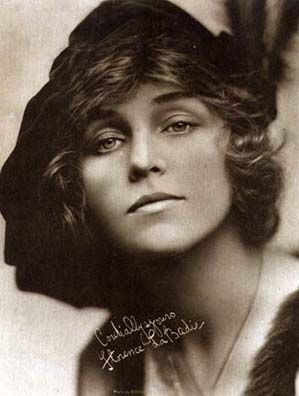
Florence La Badie was an American-Canadian actress in the early days of the silent film era. She was a major star between 1911 and 1917. Her career was at its height when she died at age 29 from injuries sustained in an automobile accident.
A feature film or feature-length film, also called a theatrical film, is a narrative film with a running time long enough to be considered the principal or sole presentation in a commercial entertainment program. The term feature film originally referred to the main, full-length film in a cinema program that included a short film and often a newsreel. Matinee programs, especially in the US and Canada, in general, also included cartoons, at least one weekly serial and, typically, a second feature-length film on weekends.

The Nestor Film Company, originally known as the Nestor Motion Picture Company, was an American motion picture production company. It was founded in 1909 as the West Coast production unit of the Centaur Film Company located in Bayonne, New Jersey. While not the first movie studio in Los Angeles, Nestor made great strides on October 27, 1911, by establishing the first permanent motion picture studio in Hollywood, California, and producing the first Hollywood films. The company later merged with its distributor, the Universal Film Manufacturing Company, on May 20, 1912. Nestor remained a recognizable brand name for Universal until at least the middle of 1917.
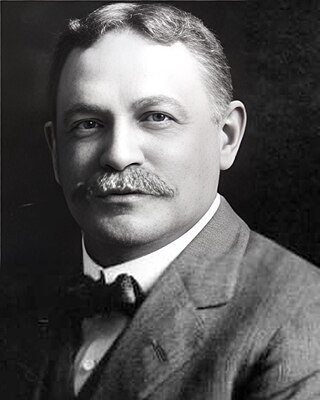
William Nicholas Selig was a vaudeville performer and pioneer of the American motion picture industry. His stage billing as Colonel Selig would be used for the rest of his career, even as he moved into film production.

The Lubin Manufacturing Company was an American motion picture production company that produced silent films from 1896 to 1916. Lubin films were distributed with a Liberty Bell trademark.

Grace Cunard was an American actress, screenwriter and film director. During the silent era, she starred in over 100 films, wrote or co-wrote at least 44 of those productions, and directed no fewer than eight of them. In addition, she edited many of her films, including some of the shorts, serials, and features she developed in collaboration with Francis Ford. Her younger sister, Mina Cunard, was also a film actress.

Screen Gems is an American film production company owned by Sony Pictures Entertainment, a subsidiary of Japanese multinational conglomerate, Sony Group Corporation. The Screen Gems brand has served several different purposes for its parent companies over the decades since its incorporation, initially as a cartoon studio, then a television studio, and later on as a film studio. The label currently serves as a film production that specializes in genre films, mainly horror.

Marion Leonard was an American stage actress who became one of the first motion picture celebrities in the early years of the silent film era.
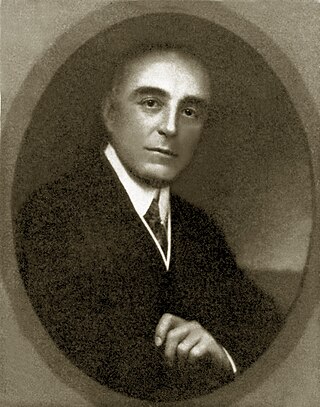
Pierre Ernest Jules Brulatour was a pioneering executive figure in American silent cinema. Beginning as American distribution representative for Lumiere Brothers raw film stock in 1907, he joined producer Carl Laemmle in forming the Motion Picture Distributing and Sales Company in 1909, effectively weakening the stronghold of the Motion Picture Patents Company, headed by Thomas Edison, a large trust company that was then monopolizing the American film industry through contracts with hand-picked, established studios. By 1911 Brulatour was president of the Sales Company. He was a founder of the Universal Film Manufacturing Company, later known as Universal Pictures.
The decade of the 1910s in film involved some significant films.
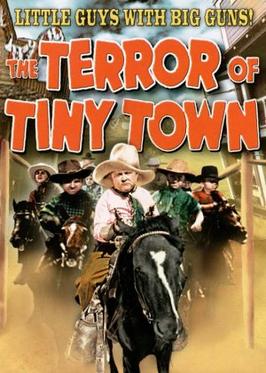
The Terror of Tiny Town is a 1938 American musical Western film produced by Jed Buell, directed by Sam Newfield and starring Billy Curtis. The film was shot at a sound studio in Hollywood and partly at Placeritos Ranch in Placerita Canyon, California. The inspiration came when Buell overheard an employee jokingly say "If this economic dive keeps going, we'll be using midgets as actors".

Stanner E.V. Taylor was an American screenwriter and film director of the silent era. He wrote for more than 100 films between 1908 and 1929.

Providencia Ranch, part of Providencia Land and Water Development Company property named for the Rancho Providencia Mexican land grant, was a property in California, US. It was used as a filming location for the American Civil War battle scenes in The Birth of a Nation (1915) and other silent motion pictures. The valley was also the site for two Universal Studios west coast operations in 1914.

Traffic in Souls is a 1913 American silent crime drama film focusing on forced prostitution in the United States. Directed by George Loane Tucker and starring Jane Gail, Ethel Grandin, William H. Turner, and Matt Moore, Traffic in Souls is an early example of the narrative style in American films. The film consists of six reels, which was longer than most American films of the era.

The Woman in White is a 1912 American short silent film based on the 1860 novel of the same name by Wilkie Collins, produced by the Gem Motion Picture Company. Unlike a second film adaptation of The Woman in White produced by the Thanhouser Company the same year, it is not a lost film; a copy is preserved at the George Eastman Museum in Rochester, New York.
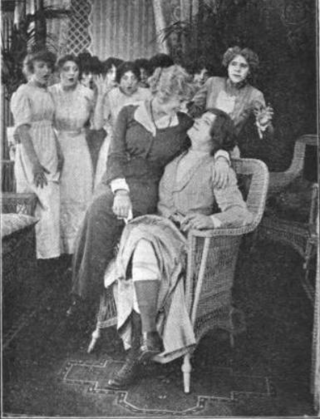
Billy's Adventure is a single-reel American silent comedy film released in 1913. It was one of the last in a series of films made by actors Billy Quirk and Violet Horner for the Gem Motion Picture Company.

The Champion Film Company was an independent production company founded in 1909 by Mark M. Dintenfass. The studio was one of the film companies that merged to form Universal Pictures.
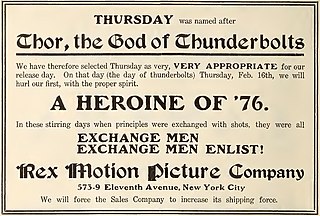
Rex Motion Picture Company was an early film production company in the United States.

Violet Horner was an American silent film actress. She had several starring roles including in one of the Lena Rivers films released in 1914 and a series of films made with Billy Quirk for Gem Motion Picture Company including Billy's Adventure.



















